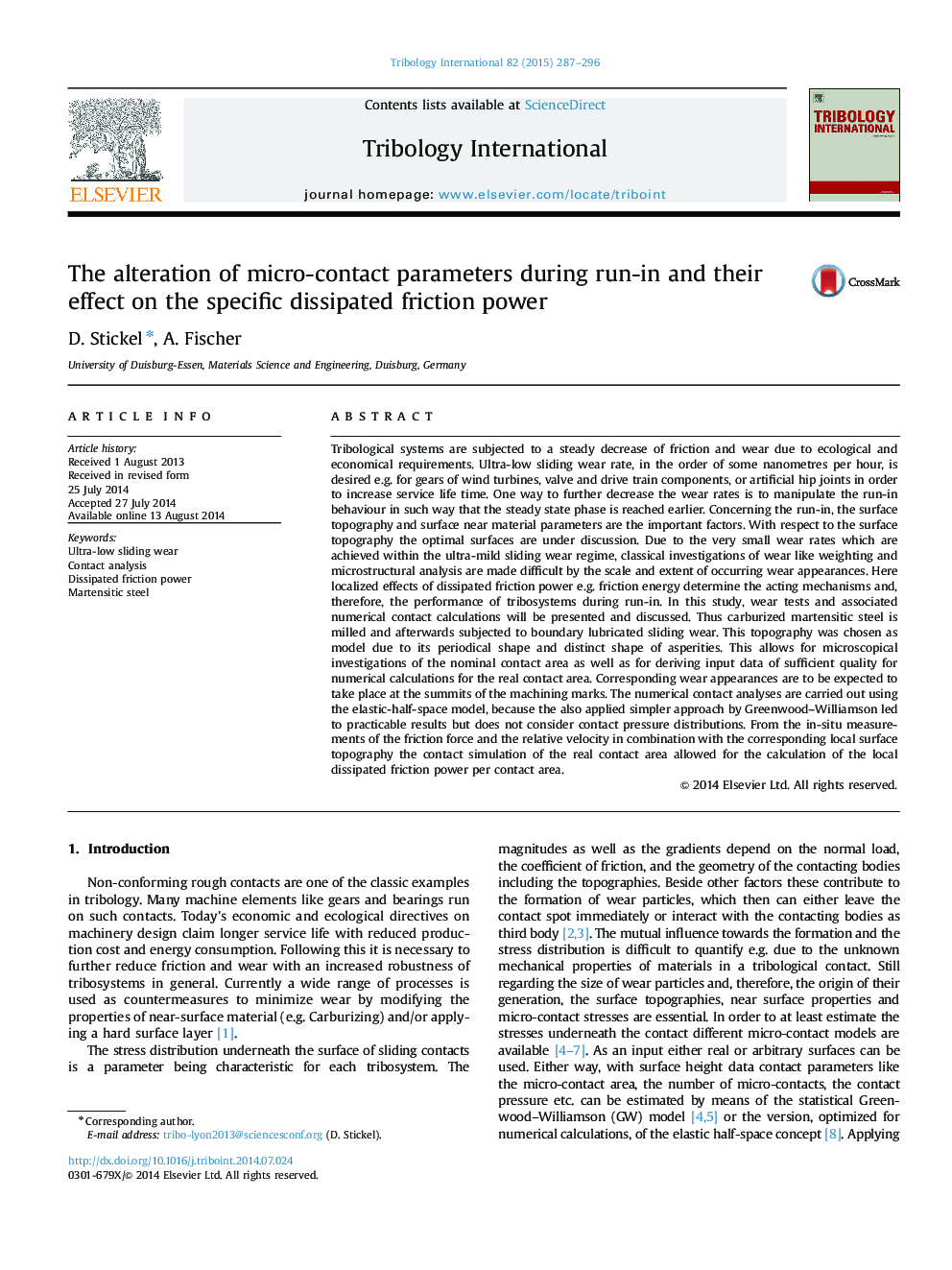| کد مقاله | کد نشریه | سال انتشار | مقاله انگلیسی | نسخه تمام متن |
|---|---|---|---|---|
| 614617 | 881406 | 2015 | 10 صفحه PDF | دانلود رایگان |
عنوان انگلیسی مقاله ISI
The alteration of micro-contact parameters during run-in and their effect on the specific dissipated friction power
ترجمه فارسی عنوان
تغییر پارامترهای میکروکنترل در هنگام ورود و تاثیر آن بر قدرت اصطکاک تخریب شده خاص
دانلود مقاله + سفارش ترجمه
دانلود مقاله ISI انگلیسی
رایگان برای ایرانیان
کلمات کلیدی
سایش کشویی فوق العاده کم تجزیه و تحلیل تماس، قدرت اصطکاک محصور، فولاد مارنزیتی،
موضوعات مرتبط
مهندسی و علوم پایه
مهندسی شیمی
شیمی کلوئیدی و سطحی
چکیده انگلیسی
Tribological systems are subjected to a steady decrease of friction and wear due to ecological and economical requirements. Ultra-low sliding wear rate, in the order of some nanometres per hour, is desired e.g. for gears of wind turbines, valve and drive train components, or artificial hip joints in order to increase service life time. One way to further decrease the wear rates is to manipulate the run-in behaviour in such way that the steady state phase is reached earlier. Concerning the run-in, the surface topography and surface near material parameters are the important factors. With respect to the surface topography the optimal surfaces are under discussion. Due to the very small wear rates which are achieved within the ultra-mild sliding wear regime, classical investigations of wear like weighting and microstructural analysis are made difficult by the scale and extent of occurring wear appearances. Here localized effects of dissipated friction power e.g. friction energy determine the acting mechanisms and, therefore, the performance of tribosystems during run-in. In this study, wear tests and associated numerical contact calculations will be presented and discussed. Thus carburized martensitic steel is milled and afterwards subjected to boundary lubricated sliding wear. This topography was chosen as model due to its periodical shape and distinct shape of asperities. This allows for microscopical investigations of the nominal contact area as well as for deriving input data of sufficient quality for numerical calculations for the real contact area. Corresponding wear appearances are to be expected to take place at the summits of the machining marks. The numerical contact analyses are carried out using the elastic-half-space model, because the also applied simpler approach by Greenwood-Williamson led to practicable results but does not consider contact pressure distributions. From the in-situ measurements of the friction force and the relative velocity in combination with the corresponding local surface topography the contact simulation of the real contact area allowed for the calculation of the local dissipated friction power per contact area.
ناشر
Database: Elsevier - ScienceDirect (ساینس دایرکت)
Journal: Tribology International - Volume 82, Part B, February 2015, Pages 287-296
Journal: Tribology International - Volume 82, Part B, February 2015, Pages 287-296
نویسندگان
D. Stickel, A. Fischer,
